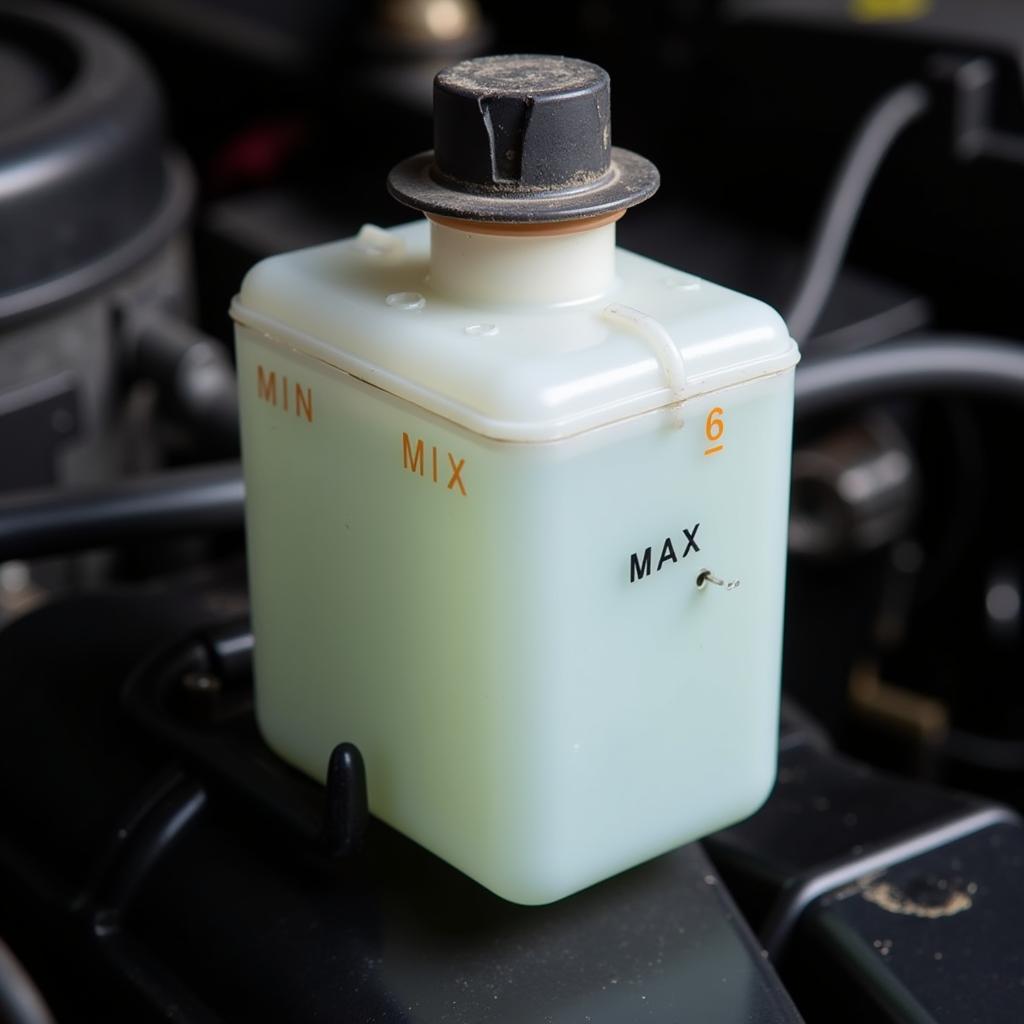The brake warning light is one of the most important indicators on your dashboard. When it illuminates, it signals a potential issue within your braking system that should never be ignored. Understanding the common brake warning light causes can help you address the problem swiftly and safely. This guide offers a detailed look at the various reasons behind a glowing brake warning light and how to best resolve them.
Common Brake Warning Light Causes
While a brake warning light might seem alarming, it doesn’t always signify a catastrophic failure. Several factors, ranging from simple oversights to more complex mechanical issues, can trigger this warning. Let’s explore some of the most prevalent brake warning light causes:
## Low Brake Fluid Level
One of the most frequent culprits behind an illuminated brake warning light is low brake fluid. This hydraulic fluid is the lifeblood of your braking system, transmitting the force from your foot on the brake pedal to the brake pads, ultimately stopping your vehicle.
 Low Brake Fluid Level in Reservoir
Low Brake Fluid Level in Reservoir
Over time, brake fluid naturally depletes. However, a sudden drop in brake fluid level often indicates a leak, which necessitates immediate attention.
## Worn Brake Pads
Brake pads are designed to wear down gradually with use. As you apply the brakes, the pads clamp down on the rotors to create friction, effectively slowing down or stopping your vehicle. Thin brake pads compromise your braking efficiency and can trigger the warning light.
Most modern vehicles feature a brake pad wear sensor that activates the warning light when the pads reach a critically low thickness, prompting you to replace them.
## Faulty Brake Light Switch
The brake light switch, located under the brake pedal, plays a crucial role in activating your brake lights when you press the pedal. A malfunctioning switch can disrupt this signal, leading to an illuminated brake warning light, and more importantly, non-functioning brake lights.
## Issues with the ABS System
Most vehicles today are equipped with an Anti-lock Braking System (ABS), which prevents wheel lockup during hard braking, maintaining steering control. A problem within the ABS system, such as a faulty ABS sensor or a malfunctioning ABS module, can trigger the brake warning light.
These issues are often accompanied by an additional warning light specifically for the ABS.
What to do When your Brake Warning Light Comes On
A glowing brake warning light should never be ignored. Here’s what to do:
- Safely pull over: As soon as it’s safe, pull your vehicle off the road and into a safe location.
- Check your brake fluid: Carefully open the hood and locate the brake fluid reservoir. If the fluid level is low, adding more might temporarily resolve the issue, but you should still seek professional inspection for a potential leak.
- Inspect your brake lights: Have someone press the brake pedal while you check if both brake lights are functioning correctly.
- Avoid driving: If the brake warning light persists or you suspect a serious issue, avoid driving your vehicle and contact a qualified mechanic immediately.
Diagnosing and Fixing Brake Warning Light Issues
While some brake warning light causes are straightforward to identify, others require professional expertise and specialized diagnostic tools. Here’s where remote diagnostics and programming come into play:
Remote Diagnostics: With advanced technology, experienced technicians can remotely access your vehicle’s onboard computer system to retrieve diagnostic trouble codes (DTCs). These codes provide valuable insights into the specific area of the braking system experiencing problems.
Remote Programming & Software Installation: In certain cases, a brake warning light might be triggered by software glitches within the vehicle’s electronic control unit (ECU). Remote programming allows technicians to update or reinstall software wirelessly, potentially resolving the issue without the need for a physical visit.
Preventing Brake Warning Light Issues
Proactive maintenance is key to avoiding unexpected brake warning light issues:
- Regular Brake Fluid Checks and Changes: It’s recommended to have your brake fluid levels checked at least every other oil change.
- Timely Brake Pad Replacement: Adhere to the manufacturer’s recommended brake pad replacement intervals for your specific vehicle make and model.
- Annual Brake Inspections: Include a thorough brake inspection in your yearly vehicle maintenance routine.
Conclusion
Understanding the potential brake warning light causes can equip you with the knowledge to address this issue promptly and ensure your safety on the road. If you encounter a persistent or recurring brake warning light, don’t hesitate to seek professional assistance. Modern remote diagnostics and programming solutions allow for efficient and convenient troubleshooting, often resolving issues without the need for a physical visit to a repair shop. Remember, timely maintenance and prompt attention to warning signs are crucial for optimal braking performance and your overall safety.
For specific brake warning light issues related to certain car models, you can find more information on bmw x3 brake warning light, audi a4 2000 brake warning light, or mercedes parking brake warning light. We also have guides available for fiat 500 brake light warning light and e39 bmw brake light warning.
